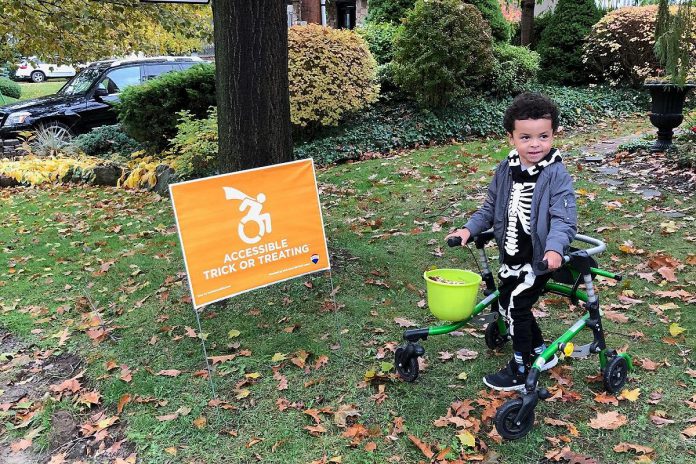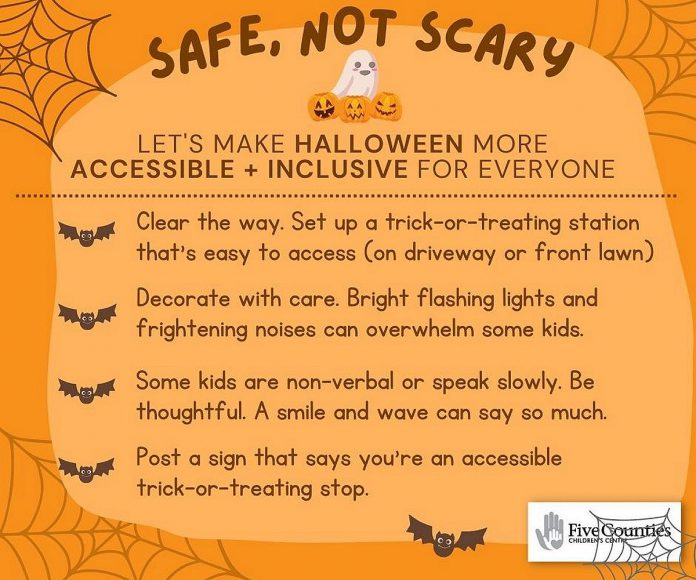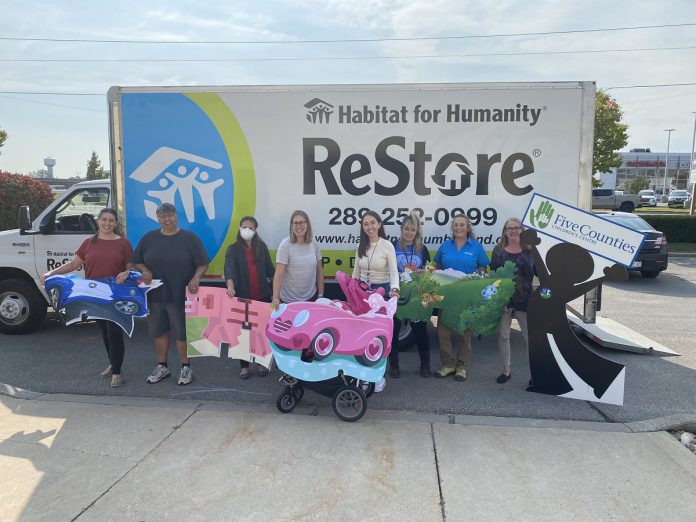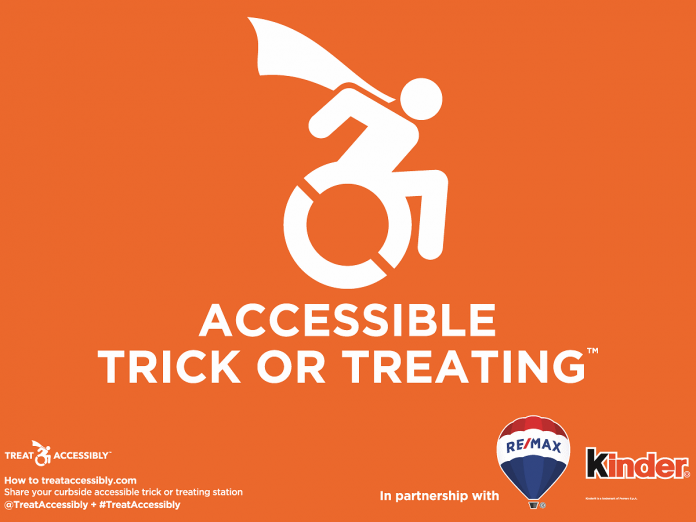
Halloween is on the horizon, and for many of us — young and old — it ranks as one of the best days of the year.
We have an opportunity to make Halloween even better for kids of all ages and abilities.
A few simple tweaks can make Halloween more inclusive — and less scary — for children who might otherwise face barriers to participating.
Here’s how.
Make trick-or-treating barrier free for all children
Set up a trick-or-treating station that is accessible and barrier free for every child to enjoy. For homes with stairs, consider setting up an accessible treat station on the front lawn, driveway, or garage.
Organize a ‘trunk-or-treat’ event
This involves handing out candy from the trunk of your vehicle. Some groups and schools organize these types of events, encouraging participants to dress up as they go around to the different vehicles collecting candy. Wherever they go, ensure trick-or-treaters are visible so they can be seen by drivers.
Clear the path for trick-or-treaters

Remove potential obstacles and ensure the way to your treat station is wide open and well lit, especially for trick-or-treaters with mobility challenges. Consider parking your vehicle on the street or in the garage to create more space.
Dress for success with inclusive Halloween costumes
Show how crafty and creative you are by designing a costume that meets your child’s unique needs and situation. If a child has sensory issues or sensitivities to traditional Halloween costumes, create your own using simple and soft clothing that reflects a child’s preferences. Many party stores carry adaptive and accessible styles of costumes, including ones that cover wheelchairs. See what’s available or try making your own.
At Five Counties, we were very fortunate to recently receive a donation of 50 new Halloween costumes/covers for wheelchairs and strollers from our friends at ReStore/Habitat for Humanity Northumberland. We’ve been handing out these costumes to clients across all of our Five Counties sites, and the smiles on the faces of our families are almost as big as the enthusiasm shown by our staff to share these wonderful items.

Decorate for Halloween with care
While scary and spooky decorations are appealing, they can be frightening to some. Bright flashing lights and loud or frightening noises can cause problems for children with sensory processing issues, autism, or epilepsy. Be thoughtful and tactful in how you decorate so more trick-or-treaters can take part.
Communication counts
Some children may say ‘trick or treat’ differently. Some may use sign language, assistive technology, speak slowly, or be non-verbal. Be respectful whatever the circumstances. A smile and wave can say so much.
Seeing blue? That’s OK.
Blue pumpkins have been informally adopted by some families as a way to indicate children have unique ways of behaving and communicating. If you see a trick-or-treater carrying a blue pumpkin, be understanding and adjust your interactions as needed.
Use ‘show and tell’ to hand out treats
If you encounter children with visual or hearing problems, describe or hold up the treat before placing it in the bag so they are aware of what they are receiving.
Put up a sign of the times

If you want to make an even stronger statement, put up a sign on your front lawn indicating you are an accessible/inclusive trick-or-treating stop.
The Treat Accessibly organization offers a sign you can get from your local RE/MAX office, or you download and print your own.
Offer non-candy options
Consider having non-food treats in your basket so all kids can enjoy, especially those with food allergies and others for whom candy is not an option. Paint or buy a teal pumpkin as a noticeable sign that you offer trick-or-treaters a choice of non-food items.
Halloween is a day that all of us should be able to experience and enjoy. With a few simple tricks, we can open more doors to little ghosts and goblins — making Halloween more of a treat for everyone.


























